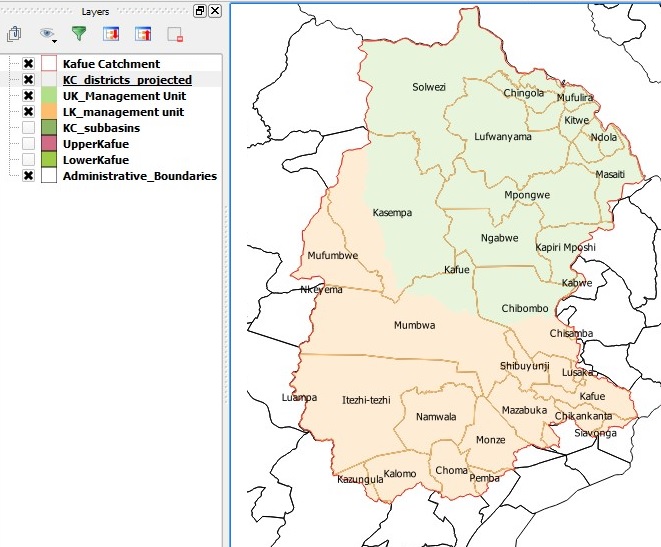
water resource management in Lusaka, Zambia
Several countries in southern Africa are in the process of strengthening the water resource management sector. This is based on the recognition that a holistic approach to water resource management promotes sustainable water development through balancing economic efficiency, social equity and environmental integrity. For Zambia, this process began around the turn of the millennium through the Water Resources Action Programme (WRAP) and culminated in the enactment of the Water Resources Act of 2011. The Act provided a legal basis for the establishment of Water Resources Management Authority (WARMA) and stakeholder platforms such as Catchment Councils. With support from various partners in Zambia, WARMA established catchment management offices in three catchments in 2016, with the aim of increasing institutional presence. These catchments included the Kafue, Luangwa and Chambeshi River Catchments.

WARMA
It was against this backdrop that a stakeholder workshop was held in December 2016 in Lusaka, Zambia. The main objectives of the workshop were to select and form Reference Groups, as well as initiate the process for developing the Catchment Management Plan. These Reference Groups serve as mirror institutions of Catchment and Sub-catchment Councils until the Statutory Instrument (SI) under the Water Resource Management Act that mandates the Catchment Management Council is passed by law makers in Zambia. The establishment of Reference Groups is intended as a proactive approach of not waiting for the SI to be passed but kick-starting an active and deliberate stakeholder engagement process in the Kafue Catchment.
The workshop was conducted with a multi-stakeholder engagement approach, guided by principles of inclusiveness, authenticity and the balanced representation of views and interests. Participants were broken into groups: local authority representatives; regulatory authorities; and water users (commercial farmers, domestic, bulk water users, and hydro-power, among others). Individuals from various stakeholders in the Kafue River Catchment were nominated into three groups: the Kafue River Catchment Reference Group as a stakeholder platform for the entire basin, and the Upper and Lower Kafue Reference Groups as stakeholder platforms for the Upper and Lower Kafue Catchment respectively. Nominations of representatives for the reference groups were undertaken based on set criteria under the Water Resource Management Act.

Catchment Office, WARMA
The workshop also provided an opportunity to identify, discuss and propose required actions to emerging water resource issues by both WARMA and stakeholders. The issues were identified according to water use categories and districts within the Kafue River Catchment, and will provide a basis for the development of Catchment and Sub-catchment Management Plans.
It should be noted that the workshop is part of a larger stakeholder engagement process supported by various partners and non-government organisations in Zambia. Lessons from this process will provide a benchmark for the establishment of Catchment and Sub-catchment Councils in other catchments such as Luangwa and Chambeshi.
Acknowledgement: As the International Water Security Network through the Water Research Node, we are grateful to been part of this process through the representation of one of our PhD students, Machaya Chomba, at this workshop.
Rowen Jani is Kafue Catchment Manager, Water Resources Management Authority, Zambia.
